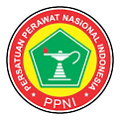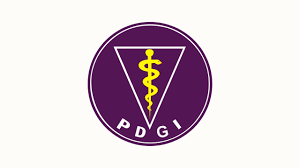Association Between Fast and Junk Food Consumption and Hypertension Risk Among Adults in Bengkulu: A Case-Control Study
DOI:
https://doi.org/10.26630/jk.v16i2.5155Keywords:
Adults, Dietary habits, Lifestyle, Non-communicable diseasesAbstract
Hypertension is caused by a variety of factors, including an unhealthy lifestyle such as a poor diet (high in salt, fat, and sugar), lack of physical activity, obesity, and smoking and drinking habits. Despite extensive global and national research on the link between fast and junk food consumption and hypertension, there is a notable lack of localized studies in regions like Bengkulu. The rising fast food intake and hypertension prevalence in these areas underscore the urgent need for context-specific evidence to support targeted public health interventions. This study aims to determine the relationship between fast food and junk food consumption habits and the incidence of hypertension in adults with a control case design. A total of 30 case groups and 60 control groups. Data collection was carried out using instruments such as respondent identity forms, informed consent sheets, the Food Frequency Questionnaire (FFQ), and blood pressure measuring devices (digital sphygmomanometers, stethoscopes, and observation sheets). Data analysis using the Chi-Square Test and multivariate logistic regression. The results of the bivariate analysis show that the habit of eating fast food often had a risk of 28.5 times, and the habit of eating junk food often had a risk of experiencing hypertension in adults 26.0 times. The results of the multivariate analysis showed a significant correlation between fast food consumption (p-value <0.0001; OR=23,709) and junk food (p-value <0.0001; OR=16,687) with the incidence of hypertension after controlling for the age factor. It is necessary to increase efforts in prevention, early detection, treatment, and education.
References
Alsabieh, M., Alqahtani, M., Altamimi, A., Albasha, A., Alsulaiman, A., Alkhamshi, A., Habib, S. S., & Bashir, S. (2019). Fast food consumption and its associations with heart rate, blood pressure, cognitive function, and quality of life. Pilot study. Heliyon, 5(5), e01566. https://doi.org/10.1016/j.heliyon.2019.e01566
Anggraini, linda putri, & Sodik, M. A. (2018). Fast Food, Junk Food, dan Dampaknya Bagi Kesehatan. Osf Preprints, Ldl. https://doi.org/10.1016/j.heliyon.2019.e01566
Badu, F. D., Nyandra, M., Arda, Z. A., & Labaco, N. (2022). Determinan Kejadian Hiertensi Pada Lansia di Wilayah Kerja Puskesmas Tilamuta Kabupaten Boalemo Provinsi Gorontalo Tahun 2022. Jurnal Kesehatan Terpadu, 6(2), 45–54.
Destra, E., Frisca, F., Santoso, A., & Friamnsyah, Y. (2022). Hubungan Asupan Makanan Cepat Saji dengan Angka Kejadian Hipertensi pada Orang Dewasa dengan Aktifitas Fisik Ringan Hingga Sedang. Jurnal Medika Hutama, 03(03), 2525–2529.
Dinas Kesehatan Propinsi Bengkulu. (2021). Profil Kesehatan Propinsi Bengkulu Tahun 2021. Bengkulu.
Dinas Kesehatan Propinsi Bengkulu. (2022). Profil Kesehatan Provinsi Bengkulu Tahun 2022. Bengkulu.
Fauziyyah, Z. R., & Solikhah, S. (2021). Hubungan Pola Konsumsi Makanan Cepat Saji Dan Hipertensi : Sebuah Penelitian Berskala Nasional Di Indonesia. Buletin Penelitian Sistem Kesehatan, 24(1), 31–37. https://doi.org/10.22435/hsr.v24i1.2986
Isfandiari, M. A., Fajariyah, R. N., & Destiani, A. (2021). Risiko Pola Konsumsi Dan Status Gizi Pada Kejadian Hipertensi Masyarakat Migran Di Indonesia. Media Gizi Indonesia, 16(2), 194–199. https://doi.org/10.20473/mgi.v16i2.194-199
Islamy, I. El, Simamora, L., Syahri, A., Zaini, N., Sagala, N. A., & Dwi, A. (2023). Faktor Determinan Kejadian Hipertensi di Desa Sikeben Kecamatan Sibolangit Kabupaten Deli Serdang. Jurnal Ilmiah Universitas Batanghari Jambi, 23(1), 601. https://doi.org/10.33087/jiubj.v23i1.2808
Istiqomah, A. N. (2016). Beban Ekonomi Pada Penderita Hipertensi Dengan Status Pbi Jkn Di Kabupaten Pamekasan. Jurnal Manajemen Kesehatan Yayasan RS.Dr. Soetomo, 2(2), 124–132. https://doi.org/10.29241/jmk.v2i2.58
Kapahang, G. V., Wiyono, W. I., & Mpila, D. A. (2023). Analisis Faktor Risiko Terhadap Kejadian Hipertensi Di Puskesmas Ratahan. Jurnal Kesehatan Tambusai, 4(2019), 637–646.
Kementerian Kesehatan Republik Indonesia. (2018). Laporan Nasional Riset Kesehatan Dasar 2018. In Kementerian Kesehatan RI. Jakarta: Badan Penelitian dan Pengembangan Kesehatan.
Kementerian Kesehatan Republik Indonesia. (2023). Peraturan Menteri Kesehatan Republik Indonesia No. 3 Tahun 2023 Tentang Standar Tarif Pelayanan Kesehatan Dalam Penyelenggaraan Program Jaminan Kesehatan, Permenkes No. 31. Tahun 2023. Jakarta.
Kementerian Kesehatan Republik Indonesia. (2023). Survei Kesehatan Indonesia (SKI) dalam Angka. Jakarta.
Kim, J., Hoang, T., Boo, S. Y., Kim, J. M., Choi, J. H., Park, E. J., Lee, S., Park, E., Min, J. Y., Lee, I. S., & Youn, S. Y. (2020). Associations of dietary intake with cardiovascular disease, blood pressure, and lipid profile in the Korean population: A systematic review and meta-analysis (Journal of Lipid Atherosclerosis, 2020, 9, 1, 205–229), 10.12997/jla. 2020.9.1.205. Journal of Lipid and Atherosclerosis, 9(3), 474–475. https://doi.org/10.12997/jla.2020.9.3.474
Lin, J. D., Chen, Y. L., Wu, C. Z., Hsieh, C. H., Pei, D., Liang, Y. J., & Chang, J. B. (2016). Identification of Normal Blood Pressure in Different Age Groups. Medicine (United States), 95(14), 1–8. https://doi.org/10.1097/MD.0000000000003188
Meher, M., Pradhan, S., & Pradhan, S. R. (2023). Risk Factors Associated With Hypertension in Young Adults: A Systematic Review. Cureus, 15(4). https://doi.org/10.7759/cureus.37467
Pertiwi, N. K. N. A. (2022). Hubungan Pola Konsumsi Junk Food dengan eEjadian HIpertensi pada Lansia di Desa Jimbaran. [Undergraduate thesis]. Denpasar: Faculty of Health, Institut Teknologi Dan Kesehatan Bali.
Puryanti, E., Gustina, E., & Yusnilasari. (2022). Analisis Faktor Risiko Kejadian Hipertensi di Puskesmas Lubuk Batang Wilayah Kerja Dinas Kesehatan Kabupaten OKU Tahun 2021. Jurnal Kesehatan Saelmakers PERDANA, 5(1), 40–51. https://doi.org/10.32524/jksp.v5i1.411
Rahayu, S. (2021). Hubungan Konsumsi Junk Food Dengan Kejadian Hipertensi Usia Produktif Di Desa Kuok Wilayah Kerja Upt Blud Puskesmas Kuok Kabupaten Kampar Tahun 2021. [Undergraduate thesis]. Bangkinang Kota: Faculty of Health Sciences, Universitas Pahlawan Tuanku Tambusai.
Saleh, A. J. (2019). Hubungan Kebiasaan Konsumsi Makanan Siap Saji (Fast Food), Status Gizi dan Kejadian Hipertensi Dengan Fungsi Kognitif Pada Remaja. [Thesis]. Master of Nutritional Science Program, Universitas Sebelas Maret.
Sari, F., & Zulfitri, R. (2020). Hubungan Kebiasaan Konsumsi Kopi Dengan Tekanan Darah Pada Lansia Riwayat Hipertensi. Jurnal Vokasi Keperawatan, 5(2), 138–147. https://doi.org/10.33369/jvk.v5i2.24114
Setyaningsih, E. D., & Manikam, R. M. (2021). Hubungan Konsumsi Fast Food dan Asupan Natrium dari Fast Food dengan Tekanan Darah Remaja. Jurnal Ilmiah Gizi Kesehatan, 9(11), 9–15.
Siregar, S. M. F., & Lubis, A. I. (2022). Analysis of Hypertension Risk Behavior. J-Kesmas: Jurnal Fakultas Kesehatan Masyarakat (The Indonesian Journal of Public Health), 9(2), 50–55. https://doi.org/10.35308/j-kesmas.v9i2.6101
Sumarni, R., Sampurno, E., & Aprilia, V. (2016). Konsumsi Junk Food dan Hipertensi pada Lansia di Kecamatan Kasihan, Bantul, YogyakartaKasihan,. Jurnal Ners Dan Kebidanan Indonesia, 3(2), 59–63. https://doi.org/10.21927/jnki.2015.3(2).59-63
Suryani, T., Syafiq, A., Sartika, R. A. D., & Putri, P. N. (2025). Dietary Patterns, Physical Activity, And Obesity Status On Blood Pressure In Hypertensive Patients. JKM (Jurnal Kebidanan Malahayati), 11(4), 291–306. https://doi.org/10.33024/jkm.v11i4.19450
Suryanti, D., Harokan, A., Priyatno, A. D., & Handayani, S. (2022). Analisis Hubungan Kejadian Hipertensi pada Dosen UIN Sulthan Thaha Saifuddin Jambi. Journal Of Health Science, VII(I), 13–23. https://doi.org/https://doi.org/10.24929/jik.v7i1.2025
Suprayitno, V. Y., Romadhona, N., Surialaga, S., & Hermawan, N. A. (2023). Kaitan Frekuensi Konsumsi Makanan Cepat Saji dengan Kejadian Hipertensi pada Usia Produktif. In Bandung Conference Series: Medical Science (Vol. 3, No. 1, pp. 262-266). https://doi.org/10.29313/bcsms.v3i1.5951
Syafira, S., Nadira, C. S., & Akbar, T. I. S. (2022). Analisis Perbedaan Fungsi Kognitif pada Pasien dengan Variasi Tekanan Darah Normal, Hipertensi Terkontrol dan Hipertensi Tidak Terkontrol di Poli Penyakit Dalam RSU Cut Meutia. Galenical : Jurnal Kedokteran Dan Kesehatan Mahasiswa Malikussaleh, 1(2), 10. https://doi.org/10.29103/jkkmm.v1i2.8148
Vemu, P. L., Yang, E., & Ebinger, J. (2024). ESH Hypertension Guideline Update Bringing Us Closer Together Across the Pond - American College of Cardiology. American College of Cardiology, 1–7. https://www.acc.org/Latest-in-Cardiology/Articles/2024/02/05/11/43/2023-ESH-Hypertension-Guideline-Update
Wang, C., Zheng, Y., Zhang, Y., Liu, D., Guo, L., Wang, B., & Zuo, H. (2022). Dietary Patterns in Association With Hypertension: A Community-Based Study in Eastern China. Frontiers in Nutrition, 9(July), 1–10. https://doi.org/10.3389/fnut.2022.926390
World Health Organization. (2023). Hypertension. World Health Organization.
World Health Organization. (2023). Global Report on Hypertension. World Health Organization.
Zhang, J., Du, W., Huang, F., Li, L., Bai, J., Wei, Y., Wang, Z., Zhang, B., & Wang, H. (2023). Longitudinal study of dietary patterns and hypertension in adults: China Health and Nutrition Survey 1991–2018. Hypertension Research, 46(10), 2264–2271. https://doi.org/10.1038/s41440-023-01322-x
Downloads
Published
Issue
Section
License
Copyright (c) 2025 Nabila Putriseptiani, Demsa Simbolon, Ahmad Rizal

This work is licensed under a Creative Commons Attribution-ShareAlike 4.0 International License.
Authors who publish in this journal agree to the following terms:
- Authors retain copyright and grant the journal right of first publication with the work simultaneously licensed under a Creative Commons Attribution License (CC BY-SA 4.0) that allows others to share the work with an acknowledgment of the work's authorship and initial publication in this journal.
- Authors can enter into separate, additional contractual arrangements for the non-exclusive distribution of the journal's published version of the work (e.g., post it to an institutional repository or publish it in a book), with an acknowledgment of its initial publication in this journal.
- Authors are permitted and encouraged to post their work online (e.g., in institutional repositories or on their website) prior to and during the submission process, as this can lead to productive exchanges and earlier and greater citations of published work.











